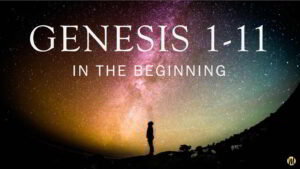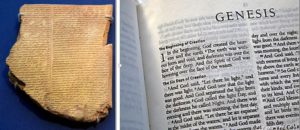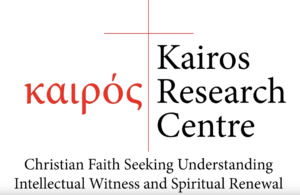 Genesis 1–11: God’s Design for Humanity. Pt. 1/5
Genesis 1–11: God’s Design for Humanity. Pt. 1/5
Faith Seeking Understanding, Intellectual Witness and Spiritual Renewal
 Genesis 1–11: God’s Design for Humanity. Pt. 1/5
Genesis 1–11: God’s Design for Humanity. Pt. 1/5

What would be an appreciative, but critical perspective on the Chinese lion dance?
It is undeniable that the lion dance contains superstitious elements. For example, the dance is often performed to bring good luck to business owners and to ward off evil spirits. These superstitious beliefs are inconsistent with Christian belief in the sovereign providence of God. Hence, some Christians have expressed uneasiness when they witness lion dances within church premises. It must be acknowledged that these churches sponsor lion dance in their premises as an initiative of good will to build bridges to the Chinese community. Sponsoring lion dances during the Chinese Spring festival or Chinese New Year provides a most fitting occasion for churches to demonstrate the fact that Chinese Christians need not abandon their cultural heritage when they embrace the Christian faith.
On the other hand, one wonders whether these churches may have unwittingly committed religious syncretism, the process where the Christian community uncritically adopts superstitious beliefs which are contrary to the fundamental tenets of Christianity. Continue reading “Redeeming the Lion Dance for the Glory of God?”

Link to video – Intelligent Design & the GOD Hypothesis
This talk was delivered originally at the Christian STEM Nexus Forum in Nov. 2023. It explains why the “God Hypothesis” offers an explanation of the origin of the universe better than chance in the light of new developments in contemporary cosmology. Issues discussed include (1) How the Universe came into existence, (2) Intelligent Design and Irreducible Complexity in fine-tuned universe.
1 The heavens declare the glory of God,
and the sky above proclaims his handiwork.
2 Day to day pours out speech,
and night to night reveals knowledge.
3 There is no speech, nor are there words,
whose voice is not heard.
4 Their voice goes out through all the earth,
and their words to the end of the world (Psalm 19: 1-4).
Originally published on 25 Nov 2023. Updated on 13 June 2024
Genesis vs Ancient Near East Polytheistic Myths: Plagiarism or Polemics? Part 2
A. Genesis and Babylonian Creation & Flood Accounts: Similar but Independent Accounts
The chart below lists several parallels between the Creation and Flood accounts of Genesis and the Mesopotamia Enuma Elish. [Source: Currid, p. 37-38]
| Enuma Elish (Mesopotamia) | Genesis |
| Divine spirit and cosmic matter are coexistent and coeternal | Divine spirit creates cosmic matter and exists independently of it |
| Primeval chaos; Tiamat enveloped in darkness | The earth a desolate waste, with darkness covering the deep (tehom) |
| Light emanating from the gods | Light created |
| The creation of the firmament | The creation of the firmament |
| The creation of dry land | The creation of dry land |
| The creation of the luminaries | The creation of the luminaries |
| The creation of man | The creation of man |
| The gods rest and celebrate | God rests and sanctifies the seventh day |
How does one account for these similarities? Continue reading “Book of Genesis vs Babylonian Creation (Enuma Elish) and Babylonian Flood (Epic of Gilgamesh)”
 Many critical scholars in Western universities suggest that the biblical Creation and Flood stories borrowed ideas from Ancient Near Eastern Texts (ANET). For example, the Creation story in Genesis must be influenced by the Babylonian creation story of Enuma Elish since the story in Genesis is briefer and the preserved records of Genesis belong to a later date. However, Kenneth Kitchen rejects this notion. He writes, “The common assumption that the Hebrew account is simply a purged and simplified version of the Babylonian legend (applied also to the Flood stories) is fallacious on methodological grounds. In the Ancient Near East, the rule is that simple accounts or traditions may give rise (by accretion and embellishment) to elaborate legends, but not vice versa. In the Ancient Orient, legends were not simplified or turned into pseudo-history (historicized) as has been assumed for early Genesis.”/1/
Many critical scholars in Western universities suggest that the biblical Creation and Flood stories borrowed ideas from Ancient Near Eastern Texts (ANET). For example, the Creation story in Genesis must be influenced by the Babylonian creation story of Enuma Elish since the story in Genesis is briefer and the preserved records of Genesis belong to a later date. However, Kenneth Kitchen rejects this notion. He writes, “The common assumption that the Hebrew account is simply a purged and simplified version of the Babylonian legend (applied also to the Flood stories) is fallacious on methodological grounds. In the Ancient Near East, the rule is that simple accounts or traditions may give rise (by accretion and embellishment) to elaborate legends, but not vice versa. In the Ancient Orient, legends were not simplified or turned into pseudo-history (historicized) as has been assumed for early Genesis.”/1/
On the other hand, the relationship between Genesis and the Babylonian Flood story of the Epic of Gilgamesh could be more nuanced. There are some similarities, but also differences (the form of the Ark, duration of the Flood and the birds sent out by Noah). Perhaps, the similarities and differences arose because the memories and traditions of the event of the Flood were transmitted differently by Israel and its neighboring societies.
More importantly, Genesis displays vocabulary similar to ANET not because it borrowed ideas from ANET but because it is mounting a polemical theology against the pagan polytheism of Israel’s neighbors. Continue reading “Genesis vs Ancient Near East Polytheistic Myths: Plagiarism or Polemics? Part 1”
 Part 5: Young Earth Creation vs Old Earth Creation
Part 5: Young Earth Creation vs Old Earth Creation
Question: Does the evidence from the bible and science support young earth creation or old earth creation?
Discussants: Dr. Ng Kam Weng and Dr. Rodney Toh.
You are welcome to join the discussion at:
Part 5: Young Earth Creation vs Old Earth Creation
Please forward this message if you find the video discussion helpful.

Creation Reclaimed
Modern philosophy, which began with Descartes, is premised on the idea that objective knowledge is possible only if the cognitive agent first separates himself mentally from the external world around him. Kant reinforced the separation when he postulated a dichotomy between the phenomenal order (things as empirically observed) and the noumenal order (things-in-themselves) in order to give room for human freedom in a world determined by fundamental laws of nature. That is to say, both human knowledge and human freedom entail a flight from nature. The resulting loss of vital connection between man as knowing subject and the world of nature is one of the causes of human disregard of the environment today.
In contrast, the Bible upholds nature, or creation, as the theatre where knowledge of God is revealed. It acknowledges that God is transcendent but he reveals himself through his mighty works of creation, providence and redemption. T. F. Torrance emphasizes that our knowledge of God is mediated to us in and through this world as the sphere of his activity toward us. Torrance writes, “We know God, then, in such a way that our knowledge (theologia nostra) is correlated with the world as his creation and the appointed medium of his self-revelation and self-communication to mankind. Everything would go wrong if the creaturely reality of this world were confused with or mistaken for the uncreated Reality of God, or if knowledge of God were cut off from the fact that it is our knowledge, that is, knowledge of God by us in this world.” /1/ Continue reading “Reclaiming and Renewing Creation”

It takes expert knowledge, courage and integrity for Prof. James Tour to challenge the majority of the professors in the academic establishment who have chosen to exaggerate the ability of science to synthesize life in order to secure research grants, and the media which readily promotes sensational news which sell. Hmm, perhaps there is a deeper spiritual reason when highly intelligent people persist in promoting ‘scientific’ non-reality. Is it because it is abhorrent to them to consider the alternative – that the origin of life is none other than the Creator God? Continue reading “The Origin of Life Has Not Been Explained”
Why do atheistic evolutionists conclude that Christianity is false? Basically, there rely on the following argument. The Atheistic Evolutionist Argument 1) If evolution is true, there was no first, historical Adam. 2) If there was no first, historical Adam, there was no Fall. 3) If there was no Fall, the sinful condition of humanity is … Continue reading “If Evolution – No Adam, No Fall, No Salvation, No Savior”
Why do atheistic evolutionists conclude that Christianity is false? Basically, there rely on the following argument.
The Atheistic Evolutionist Argument
1) If evolution is true, there was no first, historical Adam.
2) If there was no first, historical Adam, there was no Fall.
3) If there was no Fall, the sinful condition of humanity is not an inescapable condition.
4) If the sinful condition is not an inescapable condition, moral and religious categories like ‘sin’ and ‘salvation’ are irrelevant or unnecessary, as evolution will take whatever course it takes by chance].
5) If salvation is irrelevant or unnecessary, there is no need for a Savior.
6) The heart or fundamental claim of Christianity is that it is necessary for Jesus to come as the Savior of the human race
Conclusion: If evolution is true [i.e. there was no historical Adam], then based on (5) and (6), Christianity is false.
Continue reading “If Evolution – No Adam, No Fall, No Salvation, No Savior”
Prologue: CNN survey shows rural Malaysians find haze level acceptable! CNN conducted a nation-wide survey among rural Malaysians with the question, “What do you think of the haze?” The overwhelming answer from the Malay farmers was, “Asap tebal” which some Westerners took to mean “Acceptable”. To assist Malaysians who are confused by the discrepancy between … Continue reading “Creation Care and Renewal”
Prologue: CNN survey shows rural Malaysians find haze level acceptable!
CNN conducted a nation-wide survey among rural Malaysians with the question, “What do you think of the haze?” The overwhelming answer from the Malay farmers was, “Asap tebal” which some Westerners took to mean “Acceptable”.
To assist Malaysians who are confused by the discrepancy between hazy news and reality, Creation News Network invites its subscribers to read and comment on this Op-ed, “Creation Care and Renewal” written by its chief correspondent, Ng Kam Weng
Precis: Creation is not to be rendered secondary in God’s salvation. Creation retains its integrity as the present sphere of human stewardship; it is the sacramental reminder of the hope for glory.
We see the whole of creation infused with God’s presence and, indeed, the creation itself is sometimes understood as the “temple of God” in the broadest sense of that expression. We care for the creation precisely because God’s presence fills it and he has made it the dwelling place of those created in his image. By caring for the “house” we honor the “builder of the house.” Creation care becomes a part of what it means to love and honor God.
Related Post: Co-Creator or Priestly Steward: Theological Perspectives on Biotechnology and the Perfectibility of Man LINK